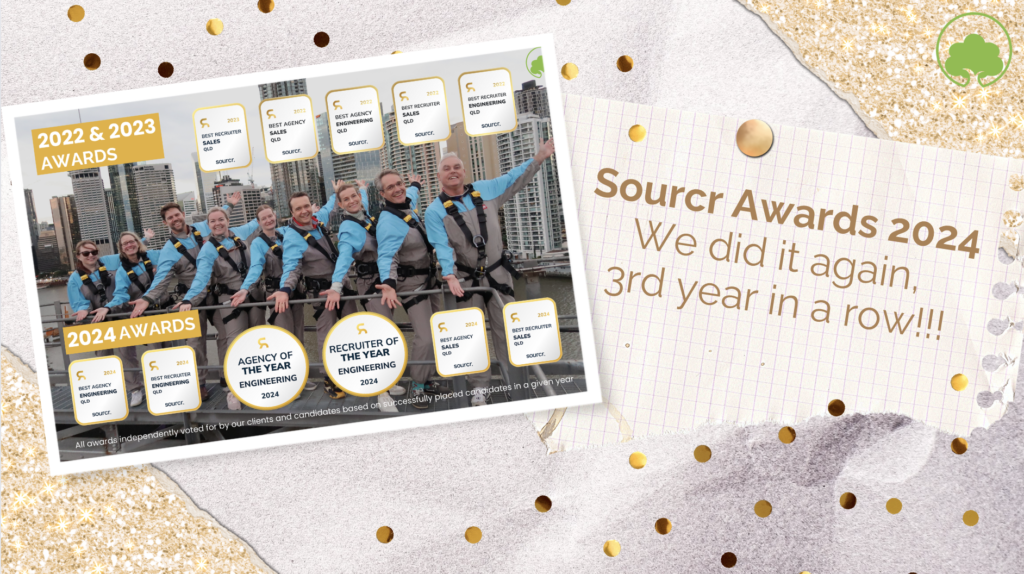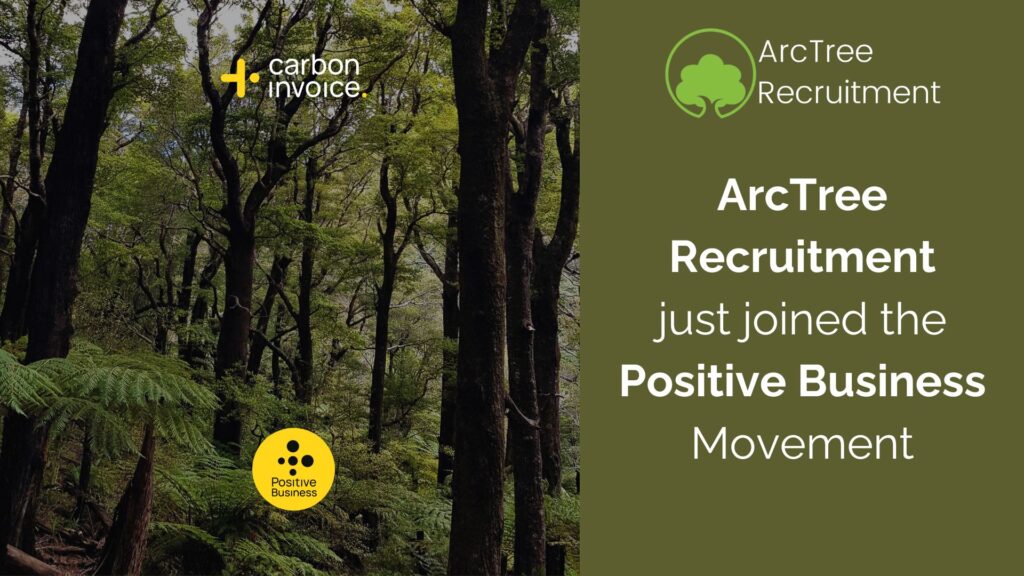A White Paper by David Kurlan
For more than 40 years, companies have been attempting to find a more accurate way to select salespeople who will succeed and, at the same time, reduce turnover in their sales organizations. In 1964, Harvard Business Review published “What Makes a Good Salesman”, an article by Herbert M. Greenberg and David Mayer. They detailed their four-year study of salespeople and explained the commonalities they observed in better salespeople. They learned, for the first time, that good salespeople had the following two characteristics in common.
1. Empathy
This is the ability to sense the reactions of other people and to notice their subtle clues and cues. Having empathy enables good salespeople to really understand what a customer wants, even when those desires aren’t articulated.
2. Ego-Drive
This is the need to have a prospect or customer say yes. What great salespeople seek is an opportunity to turn others around to their point of view.
In 1990, I completed four years of my own research during which I discovered 11 elements that contributed to sales failure. While it was true that good salespeople had empathy and ego drive, it was also true that many of the unsuccessful salespeople had those two characteristics as well.
I took an unconventional approach to my research where instead of attempting to find what top performers had in common, a technique known as benchmarking, I attempted to identify the issues involved in sales failures. I discovered four elements that were crucial to sales success.
1. Desire
Strong Desire, how badly a salesperson wants to succeed – in sales – is the most important element. When a salesperson lacks strong desire, their incentive to do anything difficult is not very compelling and they will often take the easy way out.
2. Commitment
Strong Commitment is one’s willingness to do whatever it takes to succeed. I found that many salespeople had conditional commitment – they will do what it takes – but only if it is not too difficult, not too scary, and they agree in principal with what they are being asked to do. When salespeople lack strong commitment, their incentive to do anything difficult is not very compelling and they will often take the easy way out.
3. Outlook
Outlook encompasses attitude about the company, job, career, and self. When Outlook is not as strong as it could be, as is often true with candidates looking for a new position, it can affect desire and commitment, cause excuse making and a bevy of other conditions.
4. Responsibility
When salespeople take responsibility for their results, or lack thereof, they are being responsible. Salespeople who make excuses will seldom improve as they fail to see the part they played in their most recent sales failure. When the combination of strong desire and commitment are present, accompanied by a good outlook, a salesperson will have tremendous incentive to change. I refer to a salesperson with incentive to change as “trainable”. With appropriate help, a trainable salesperson will improve.
While identifying dozens of weaknesses that could hinder sales performance I discovered five major weaknesses which, when present in certain combinations, prevent salespeople from executing their sales plans making success more uncertain.
1. Need for Approval
Many people choose sales after being told they had a perfect personality for selling. While that could be true, many of those same people feel complete only when people like them. Salespeople who are easily liked have a great advantage but salespeople who need their prospects to like them often make that a priority over getting the business. Salespeople with need for approval usually have difficulty asking tough questions, often have a fear of rejection and avoid confrontation.
2. Tendency to Become Emotionally Involved
Salespeople that think, analyze, create, strategize or otherwise talk to themselves when prospects catch them by surprise become emotionally involved instead of remaining in the moment. When they are emotionally involved, their listening skills tend to be self-focused rather than prospect focused, causing them to miss important points and lose control of the meeting.
3. Self-Limiting Record Collection (often an opposite of Empathy)
Every salesperson has as many as 60 beliefs that either support the selling process (“I have the ability to be effective with company presidents”) or sabotage (”I don’t like making cold calls”) it. The collection of self-limiting beliefs is what I refer to as the Record Collection. Ineffective salespeople often have 10 or more of these self-limiting records while more effective salespeople have very few.
4. Non-Supportive Buy Cycle (an opposite of Empathy)
Buy Cycle refers to the way a salesperson makes a major purchase for his or herself. When one buys in a way that supports the selling process, it is a Supportive Buy Cycle. Most ineffective salespeople have Non-Supportive Buy Cycles. They think it over before making decisions, comparison shop, and shop for the lowest price, perform research or think that a relatively small amount of money is a lot. When their prospects wish to engage in this behavior, the salesperson understands (empathy) and the techniques for handling stalls and put-offs of this kind are either not used at all or
used ineffectively.
5. Discomfort with Issues Involving Money (a frequent opposite of Empathy)
Many salespeople are uncomfortable escalating a question about budget, or whether a prospect can afford the product or service being offered, to the next level. Their discomfort prevents them from helping a prospect figure out how to pay or even where the money could possibly come from. When prospects don’t have the budget, can’t envision increasing the budget or don’t know how they can find the money, the salesperson empathizes rather than digging deeper, asking questions and making suggestions to solve the monetary shortage.
When I combined incentive to change with the number of weaknesses uncovered I was able to accurately calculate Growth Potential – the percentage of improvement that could reasonably be expected from an appropriate development program that focused on eliminating the weaknesses. These 5 Major Weaknesses were published in the April 1994 issue of Inc. Magazine in an article called Psyched Up or Psyched Out.
Along with two partners, I founded Objective Management Group, Inc. in 1990 for the purpose of continuing this important research and bringing this test to market as the first sales specific assessment tool. Back then, we assessed salespeople that were already employed at companies using the tool for sales development purposes only.
In 1992 we began testing candidates for sales positions. Greenberg’s position was that what it took to be successful in sales was essentially the same for any product or service as long as the candidate had ego drive and empathy. Selling is selling and there was some truth to this statement. But our early research indicated that having just one set of criteria for sales success across all industries was not sufficient. It was the equivalent to stating that an individual qualified to sell retail shelf space in a route sales position was equally qualified to sell six-figure customengineered capital equipment for a manufacturer. Since this wasn’t the case we engineered the first sliding scale hiring criteria whereby a high paying, technical sales position required a much stronger candidate than a route sales position.
My first book, Mindless Selling, was published in 2001 and used case histories to illustrate much of the preceding research. At the same time, Herbert M. Greenberg had made further progress by adding three additional dimensions to his set of criteria for sales success.
3. Service Motivation (opposite of Need for Approval)
Often lacking in individuals who possess Ego Drive, Service Motivation is the desire to hear “thank you” or “I appreciate that.” Seeking approval and appreciation, those motivated by service may fear rejection; but they are often very successful in earning the respect of their clients. Combined with persuasive talent, service motivation can translate into a delicate and golden touch.
4. Conscientiousness (similar to Responsibility)
Whether externally or internally driven, responsibility and the desire to carry out tasks are important qualities. Responsibility, purposefulness and organization are the foundations of goal setting, and sales people must have a plan if they want a lasting career.
5. Ego Strength
The way rejection is handled shows the difference between a true sales person and someone who is ill-suited to the field. The misemployed individual will feel disappointed; whereas the winner will contemplate what could have been done differently, wishing for one more shot at the prospective buyer.
By 2002, our research showed that there were important company specific requirements for success that sales candidates had to meet in order to succeed. Benchmarking would routinely overlook those requirements when the top performing salespeople were failing to meet those requirements, a fine example of mediocrity in sales organizations. Few companies had successfully identified the requirements for new salespeople and when they did, they usually looked no further than whether the candidates met the requirement through their experience.
We began to look at the various weaknesses we identified to learn whether candidates would be able to execute the various requirements.
Examples of Job Specific Criteria
[itemlist]
-
- Closing – a company with a short sell cycle or a one-call close must select salespeople who have performed in that environment previously and whose Buy Cycle shows that they don’t think it over before making a purchase.
- Hunting – a company that will require a new salesperson to go out and find new opportunities the majority of the time must select salespeople who have performed in that role previously and that don’t have call reluctance – Need for Approval, Difficulty Recovering from Rejection and “I don’t like making cold calls” in their Record Collection.
- Competition – a company that faces much of the same competition everywhere they go must select a salesperson who has sold in a competitive environment before and who’s Buy Cycle shows that they don’t comparison shop when making a purchase.
- Price Shoppers – a company that sells at a higher price than its competitors must select a salesperson who has sold in a similar price sensitive environment before and who’s Buy Cycle shows that they don’t price shop when making a purchase.
- Money Tolerance – a company that sells a high priced (5 figures or more) product or service must select a salesperson who has sold in a similar environment before and whose Buy Cycle shows that they don’t think a relatively small amount of money is a lot.
[/itemlist]
By 2004, field research provided by Tom Schaff, a colleague in Chicago, showed that most of the hirable candidates that failed in a technical sales position had the fatal combination of not being money motivated and they did not enjoy selling, weaknesses we identified but did not previously see the combination as deal breakers. His research also showed that in addition to the number of major weaknesses we identified, the severity of those weaknesses could predict failure even when the number of weaknesses was acceptable.
Later in 2004, research suggested that 3 additional company specific hiring criteria be utilized.
[itemlist]
-
- Top Executive – When a company needs its salespeople to call on the top decision maker in a company it must select a salesperson who has successfully accomplished that and who is comfortable calling at that level of the company.
- Resistance – When a product or service is often met with resistance a company must select a salesperson who has prior success in that arena and who doesn’t back off from a challenge, have any difficulty recovering from rejection or have need for approval. Some salespeople possess the ability to be quite effective but may still fail to perform if they aren’t working for effective sales managers that hold them accountable and closely supervise their activities. These skilled salespeople take the path of least resistance and require yet another set of criteria to identify whether they will succeed at a particular company.
- Hunting with Lack of Supervision – a company that requires a salesperson to devote the majority of his or her time prospecting for new opportunities but has management that devotes too little time or energy supervising or holding the salespeople accountable must select salespeople who have performed in that role previously and who don’t have “I don’t like making cold calls” in their Record Collection.
[/itemlist]
Research in 2006 showed that while few strong salespeople failed, those who did failed because they could not work from a remote location without direct supervision. This finding led to one more criteria that we could look for when the salespeople may be working out of their home offices or local offices without supervision.
[itemlist]
-
- Unlikely to Succeed Working Remotely – Research during 2008 showed that certain candidates would “get it” more quickly than others, although how quickly the candidate “got it” did not correlate to how strong they were as salespeople. We found that there were ten findings which, when weighted properly, would lead us to another important new finding:
- Figure it Out Factor – When candidates have a high figure it out factor, they ramp up more quickly than traditional candidates. Candidates who meet this criteria are considered Ideal.
[/itemlist]
Finally, research conducted late in 2008 allowed us to identify “perfect” candidates. Unlike Benchmarking, where a company would try to find candidates that have similar traits as the top performers that were assessed, we identify the salespeople who meet two criteria:
[itemlist]
-
- They are top performers (100% of quota or better)
- They assessed in the top 26% of all salespeople
[/itemlist]
Then, rather than looking for similar traits, we apply strong filters that match up sales competencies and are able to include the following new finding:
[itemlist]
-
- Perfect Candidate – This candidate is likely to be on par with the top 6% of the entire sales population.
[/itemlist]
Not surprisingly, when a company merely incorporates our assessment criteria within their existing process, very little will change. If the company’s record of accomplishment when selecting salespeople has been inconsistent or ineffective, they will be assessing candidates similar to those who have either failed or failed to overachieve.
The only real change will be a formal warning that the candidates should not be hired. In order for the value of any assessment to be realized, an effective hiring process must be implemented. Our research shows that when the following steps are executed in this order, superior results will be achieved.
1. Identify the Ideal Candidate
This is the most important step in the process and one that most companies don’t take the time to perform. A company must ask, “Why have salespeople failed in the past?” “What has caused them to struggle?” “What is it about the way we must go to market that makes it so difficult to succeed?” “What kind of resistance will they meet?” “What kind of successes should they have already experienced if they are to succeed in our company?” “Are we asking them to do anything different?” “Are our prices higher?” “Does our product offering have less value?” “Do people need and want what we have?” “What kind of support, supervision, coaching and
accountability will they get from management?”
2. Search
The thorough and effective identification of the ideal candidate will provide the criteria for an advertisement or internet posting. Rather than destroying the productive work accomplished in step 1 by describing the opportunity and the company as most ads do, describe the candidate you are looking to attract, their experiences and accomplishments.
Ads that start like, “You must have prior success selling high ticket complex conceptual services to Presidents of large companies in a highly competitive market” and end with “you must have prior income of at least $100K” will get many more of the ideal candidates to respond than an ad that starts like, “Successful, well-known company has an opening for a goal-orientated salesperson. We offer health, car, expenses, 401K, salary plus generous commission, limited travel and don’t really care if you actually sell anything. Please come and fill the seat that was vacated by the three people before you.”
3. Assess
Our statistics show that companies that assess their candidates immediately upon receiving a resume identified 50% more hirable candidates than those who delayed assessing until later in the process. Additionally, EEOC Guidelines require that if a company chooses to use an assessment, they must assess all of their candidates. The latest change to their guidelines indicates that an individual becomes an applicant as soon as his/her resume is submitted electronically.
I recommend the assessment sold by Objective Management Group since I have spent the last 14 years perfecting it. Which ever assessment you decide to use, make sure that it has the following important components:
[itemlist]
-
- Hiring recommendation (you shouldn’t have to draw a conclusion)
- Hiring criterion that adjusts to the complexity of the sales position (it can’t be the same for entry level as it is for a job that will pay $250,000!)
- Hiring criteria that incorporates the company’s requirements
- Interviewing Tips (to expose problems and inconsistencies)
- Likely problems to expect when the salesperson is in the field
- Conditions for hiring (are there any?)
- A way to rank candidates (in case you have to choose from several who are recommended)
- Compatibility with your ideal candidate (affects ramp-up time)
- Assessing in step 3 rather than step 5 accomplishes three things.
- You don’t fall in love with an undesirable candidate
- You don’t waste time interviewing undesirable candidates
- You know the candidate’s capabilities before you meet with them for the first time
[/itemlist]
4. Qualify
This step is a very powerful component of this process. It consists of no more than 5 minutes on the phone with the candidates who, according to the assessment, are hirable. In this step you determine whether the candidate actually meets your requirements by asking them to demonstrate or explain to you how they meet the criteria in your ad or posting. Observe how they listen to your questions, respond, whether they sound good enough on the phone to continue speaking with them or whether someone would want to cut them off. Listen to how they make their case and cut them off abruptly to see how they handle your put-off. Award points for the various criteria and score each candidate appropriately based on how they meet your criteria.
5. Interview
Since you already know their capabilities you can focus on other things (like eye contact, selfpresentation, spontaneity, hand shake, presence, charisma, sincerity, warmth, intelligence, how you would feel about this candidate representing your company)
40 years after Herbert K. Greenberg began his attempt to find a science to the selection of salespeople and nearly 20 years after the start of my own study of salespeople began, I can positively state that the science of predicting which salespeople will succeed is a reality. Our data strongly suggests that while 74% of all salespeople are average to weak, there is a very distinct combination of criteria that can be utilized to accurately and consistently identify the other 26% and recommend people who will succeed in a company’s sales position.
After testing more than 285,000 salespeople over the last 16 years, most of the issues that were true in 1990 are still true today. If a salesperson lacks desire or commitment for success in sales, regardless of his record of accomplishment, the chances of success with a company tomorrow are highly unlikely. It also still holds true that the more major weaknesses a candidate possesses, and the greater the severity of those weaknesses, the more ineffectively that candidate will perform.










